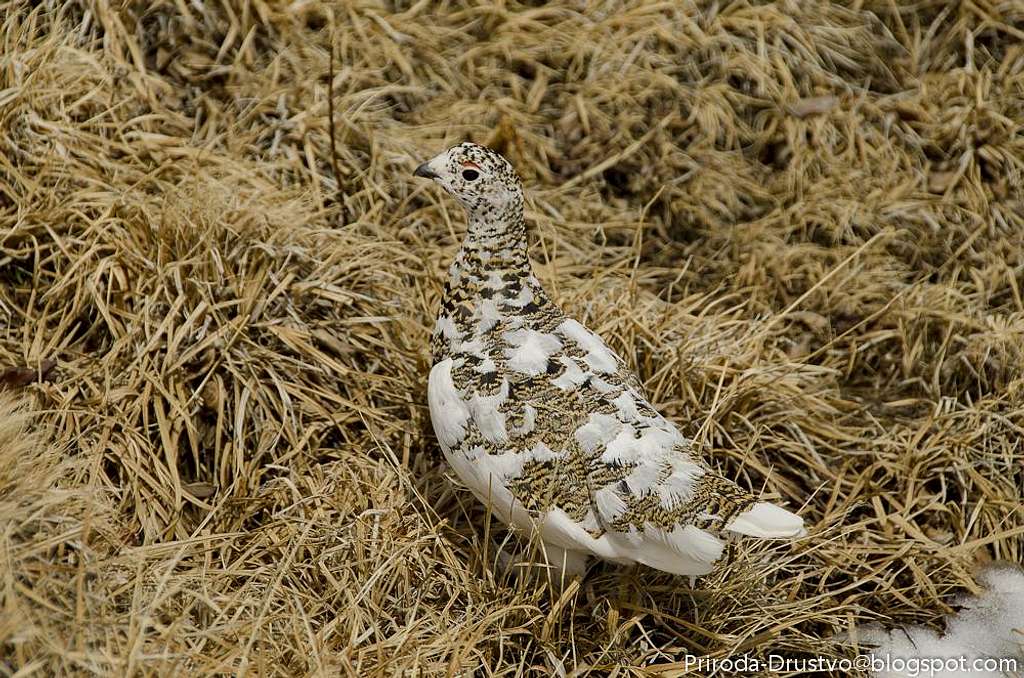
The White-tailed Ptarmigan in Colorado
Would you choose to inhabit a treeless mountaintop where bitter cold, gale-force winds desiccate the landscape and the average year-round temperature is about 26 degrees Fahrenheit? The white-tailed ptarmigan (pronounced TAR-mﬞi-gan) is one of the few animals that takes on this unique challenge and, in fact, has the distinction of being the only bird species in Colorado that lives on or near the alpine tundra year-round. And, of the three species of ptarmigan living in North America, only the white-tailed ptarmigan is found in Colorado.
During the breeding season (April to May), male ptarmigans seek out the snowless areas of the alpine tundra to begin claiming territory. Shortly thereafter, females arrive and pair bonding begins. Once a pair has bonded and mated, the female creates a nest “scrape” on the ground, using feathers and vegetation to form a protective rim for the eggs. By mid-summer, female ptarmigans can be seen with broods of 4-8 chicks feeding on the succulent buds and leaves of dwarf willow and other alpine plants.
Short summers on the treeless tundra require young birds to mature quickly. By mid-October, flocks of females and juveniles begin to move downslope to more protected areas. In locales where the tundra is especially barren and exposed, males will also seek refuge at lower elevations. To escape winter’s bitter-cold winds ptarmigans will bury themselves in snow banks.
Alpine tundra offers good wildlife viewing opportunities because of the lack of trees. However, animals that live in this open environment can also see you—and are well camouflaged to avoid detection. A master of disguise, the ptarmigan changes color with the seasons, turning from mottled brown/gray in summer to pure white in winter. To blend in with the landscape, ptarmigans also lie very still when approached, fleeing only when they are nearly stepped on! Take the time to focus, closely, on the terrain as you travel the tundra in the summer. To locate ptarmigan look for movement (a female herding young), nest scrapes, the white tail (remains white all year long), and colors or patterns that don’t quite fit the background.
Where to Look
Alpine tundra occurs as isolated mountaintop islands starting around 11,500 feet in elevation. With more than 50 peaks soaring over 14,000 feet in elevation, Colorado offers many choices to seek out white-tailed ptarmigan habitat. To find this hardy alpine bird, consider these suggested sites from the Colorado Wildlife Viewing Guide, Second Edition:
Site 47—Guanella Pass (exit 228 from I-70 west near Georgetown). One of the best ptarmigan viewing areas in the lower 48 states.
Site 48—Gray and Torres peaks (exit 221 from I-70 west near Bakerville). A high-clearance vehicle is required to access the trailhead to these 14,000-foot peaks.
Site 99—Colorado State Forest State Park and Moose Center (southeast of Walden on State Highway 14). Best for winter viewing of ptarmigan, moose, and other wildlife.
